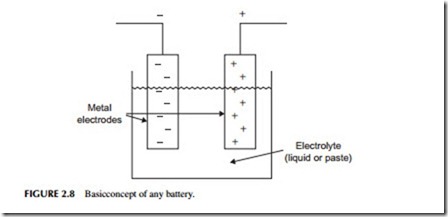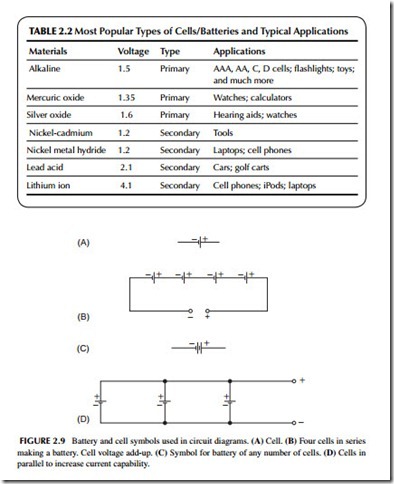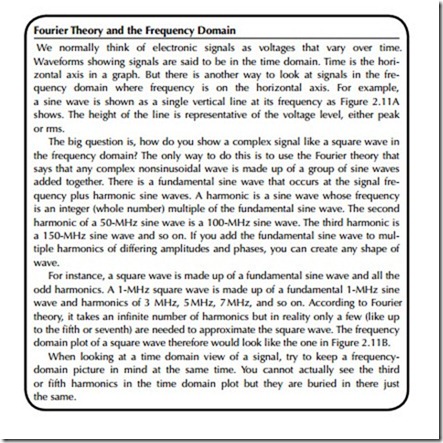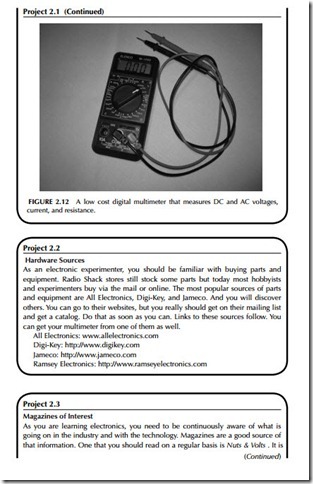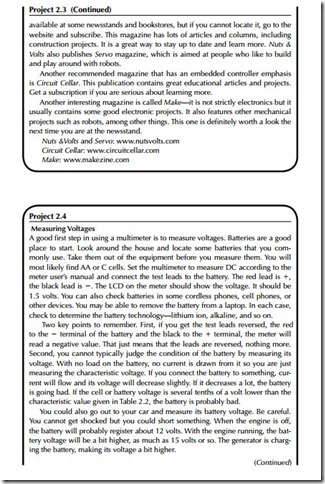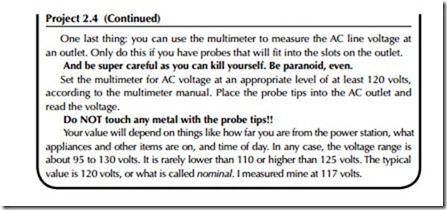PRACTICAL DC AND AC VOLTAGE SOURCES
Just what is the source of DC and AC? Such voltages originate from a variety of sources.
DC Voltage Sources
Batteries
The most common source of DC voltage is a battery. A battery is a collection of cells. A cell is the basic unit of voltage generation that creates electricity by chemical action. A battery is made up of two or more cells connected together. Figure 2.8 shows the configuration of a cell. It consists of two metal electrodes immersed in a solution called an electrolyte. The chemical interaction between the metal electrodes and the electrolyte produces a separation of charges. This separation of charges results in an excess of electrons on one electrode (the – terminal of the cell) and a shortage of electrons on the other electrode (the + terminal of the cell). If a conductor is connected externally between the terminals, electrons will flow from – to +.
The amount of voltage produced by the cell depends on the type of electrodes and the electrolyte. Various chemical combinations generate different voltages. Table 2.2 lists the most commonly used cells and the voltage they generate.
The schematic symbol of a cell is illustrated in Figure 2.9A. To create a battery, two or more cells are connected together. The cells are usually connected in series form, that is, end to end and – to +, as shown in Figure 2.9B. The cell voltages add up to produce the total battery voltage. For example, six small alkaline cells are connected in series to create a 1.5 X 6 = 9-volt transistor-radio battery. A car battery consists of six lead-acid cells connected in series; each produces 2.1 volts for a total battery voltage of 6 X 2.1 = 12.6 volts. If four nickel-metal-hydride cells are connected in series, as in Figure 2.9B, the total battery voltage is 4.8 volts.
The simplified schematic symbol for a battery is shown in Figure 2.9C. Instead of drawing all of the individual cells, the simplified battery symbol is used.
The cells listed in Table 2.2 can be separated into two categories, primary and secondary. Primary cells cannot be recharged. As the chemical action produces voltage, the electrodes and electrolyte are actually used up. At some point, no further chemical action is produced, and no voltage is generated. The cell must be discarded and replaced.
Secondary cells, on the other hand, can be recharged. In these cells, the chemical action can be reversed by connecting an external DC voltage to the battery. This is called charging. Charging forces electrons into the battery, produc- ing a reverse chemical action that rejuvenates the electrodes and the electrolyte. The cell can be discharged and charged repeatedly, giving it a very long life.
The amount of current that can be drawn from a cell depends on its size and the quantity of the materials used. Large electrodes and electrolytes can produce more current, but the voltage stays the same; the type of material, not its volume, determines voltage.
For example, a large D-size flashlight cell and a tiny AAA penlight cell are both made of alkaline material so their output voltages are both 1.5 volts. The D-cell, however, can produce more current and will have a longer life because it is larger.
A greater current capacity can be obtained by simply connecting two or more cells in parallel. In a parallel connection, the cells are wired across one another, all + leads connected together, and all – leads connected together, as shown in Figure 2.9D. The output voltage remains the same, but the current output can be higher.
Solar Cells
A special type of voltage-producing cell is the so-called solar cell. Also called a photovoltaic (PV) cell, a solar cell converts light into electrical energy. When the sun or artificial light shines on the cell surface, a voltage is generated. The most commonly used material is silicon, and a typical cell generates about 0.5 volt. Other materials, such as cadmium sulfide and gallium arsenide, are also used.
You have probably seen solar cells used in hand-held calculators. Big arrays of solar cells are now being adopted as an energy source for homes and businesses. Another important application is spacecraft. Virtually every satel- lite, deep-space probe, or other space vehicle, uses solar cells for power. Huge panels of solar cells connected in a complex series–parallel array produce
Power Supplies
Electronic circuits require a source of DC for proper operation. A great many electronic products are still powered by batteries because they are small and portable, such as cell phones, iPods, and the like. Other electronic equip- ment is designed to operate from the AC power line. Such equipment contains an electronic power supply that converts AC into the required DC voltages. Computers, TV sets, and other nonportable electronic equipment have an AC power supply.
AC Voltage Sources
Generators
The AC that appears at the outlets of our homes and offices is produced by huge electromechanical generators owned and operated by an electrical util- ity company. A source of mechanical power—such as water, or a steam tur- bine powered by oil, coal, or nuclear fuel—operates the generator. The turbine converts steam into mechanical energy to turn the generator. The genera- tor rotates coils in a strong magnetic field to produce a voltage. The speed of rotation of the coils determines the frequency. That voltage is a 60-Hz sine wave.
The big wind generators popping up across the landscape also produce AC sine waves, but because the rotational speed depends on the wind speed, the AC frequency will vary, which is unacceptable. Therefore, the AC voltage they produce is converted to DC, and then back into AC of the correct frequency (60 Hz) to be used or put on the AC power grid.
Another example is the alternator in your car. “Alternator” is just another word for an AC generator. The alternator, driven by the car engine through a belt, produces AC output that is converted to DC by diodes making up a recti- fier. The rectifier output is DC to charge the battery.
Inverters
Electronic circuits called inverters are used to produce AC from a DC source. This is common in solar power systems. The solar cells produce DC, which keeps batteries charged. The DC is then converted to AC by the inverter.
In electronic equipment, AC signals are generated by circuits called oscillators or function generators. The AC signals are sine waves, square (rectangular) waves, or triangular waves, among others.
Analog and Digital Signals
You have no doubt heard the terms “analog” and “digital.” These terms distinguish between the two main types of voltages or signals in electronic equipment. Analog signals are voltages that vary smoothly and continuously over time. You saw some in previous figures. Analog signals may be either DC or AC. A continuous DC voltage is analog, as well as a varying DC signal. A sine wave and the random signal in Figure 2.7E are also analog signals.
Analog signals come from microphones, video cameras, and sensors that detect light level, temperature, and other physical conditions. The most common types of analog signals are voice or music from a microphone and video from a camera.
Digital signals are pulses or on–off signals. The DC pulses in Figure 2.6E and 2.7C are digital. Most digital signals are binary in nature, meaning they only have two voltage values. In Figure 2.6E the two values of voltage are +12 and zero volts. In Figure 2.7C the two voltage levels are +3 and -3 volts.
You will see both analog and digital signals in all sectors of electronics. Today, most signals are digital. Special circuits called analog-to-digital con- verters (ADC) and digital-to-analog converters (DAC) are used to translate between the two types of signals.
